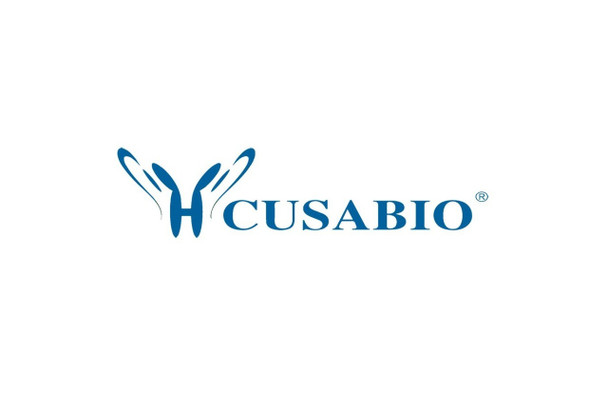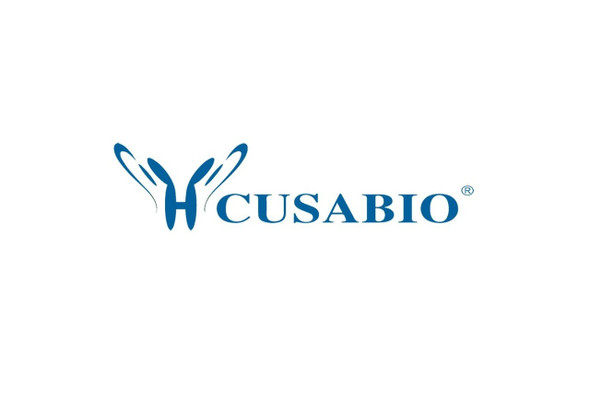Cusabio Polyclonal Antibodies
APP Antibody, Biotin conjugated | CSB-PA07179D0Rb
- SKU:
- CSB-PA07179D0Rb
- Availability:
- 3 to 7 Working Days
Description
APP Antibody, Biotin conjugated | CSB-PA07179D0Rb | Cusabio
APP Antibody, Biotin conjugated is Available at Gentaur Genprice with the fastest delivery.
Online Order Payment is possible or send quotation to info@gentaur.com.
Product Type: Polyclonal Antibody
Target Names: APP
Aliases: Amyloid-beta A4 protein (ABPP) (APPI) (APP) (Alzheimer disease amyloid protein) (Amyloid precursor protein) (Amyloid-beta precursor protein) (Cerebral vascular amyloid peptide) (CVAP) (PreA4) (Protease nexin-II) (PN-II) [Cleaved into: N-APP; Soluble APP-alpha (S-APP-alpha) ; Soluble APP-beta (S-APP-beta) ; C99 (Beta-secretase C-terminal fragment) (Beta-CTF) ; Amyloid-beta protein 42 (Abeta42) (Beta-APP42) ; Amyloid-beta protein 40 (Abeta40) (Beta-APP40) ; C83 (Alpha-secretase C-terminal fragment) (Alpha-CTF) ; P3 (42) ; P3 (40) ; C80; Gamma-secretase C-terminal fragment 59 (Amyloid intracellular domain 59) (AICD-59) (AID (59) ) (Gamma-CTF (59) ) ; Gamma-secretase C-terminal fragment 57 (Amyloid intracellular domain 57) (AICD-57) (AID (57) ) (Gamma-CTF (57) ) ; Gamma-secretase C-terminal fragment 50 (Amyloid intracellular domain 50) (AICD-50) (AID (50) ) (Gamma-CTF (50) ) ; C31], APP, A4 AD1
Background: Functions as a cell surface receptor and performs physiological functions on the surface of neurons relevant to neurite growth, neuronal adhesion and axonogenesis. Involved in cell mobility and transcription regulation through protein-protein interactions. Can promote transcription activation through binding to APBB1-KAT5 and inhibits Notch signaling through interaction with Numb. Couples to apoptosis-inducing pathways such as those mediated by G (O) and JIP. Inhibits G (o) alpha ATPase activity By similarity. Acts as a kinesin I membrane receptor, mediating the axonal transport of beta-secretase and presenilin 1. Involved in copper homeostasis/oxidative stress through copper ion reduction. In vitro, copper-metallated APP induces neuronal death directly or is potentiated through Cu2+-mediated low-density lipoprotein oxidation. Can regulate neurite outgrowth through binding to components of the extracellular matrix such as heparin and collagen I and IV. The splice isoforms that contain the BPTI domain possess protease inhibitor activity. Induces a AGER-dependent pathway that involves activation of p38 MAPK, resulting in internalization of amyloid-beta peptide and leading to mitochondrial dysfunction in cultured cortical neurons. Provides Cu2+ ions for GPC1 which are required for release of nitric oxide (NO) and subsequent degradation of the heparan sulfate chains on GPC1. Ref.38 Ref.65 Ref.67 Ref.90 Ref.91 Beta-amyloid peptides are lipophilic metal chelators with metal-reducing activity. Bind transient metals such as copper, zinc and iron. In vitro, can reduce Cu2+ and Fe3+ to Cu+ and Fe2+, respectively. Beta-amyloid 42 is a more effective reductant than beta-amyloid 40. Beta-amyloid peptides bind to lipoproteins and apolipoproteins E and J in the CSF and to HDL particles in plasma, inhibiting metal-catalyzed oxidation of lipoproteins. Beta-APP42 may activate mononuclear phagocytes in the brain and elicit inflammatory responses. Promotes both tau aggregation and TPK II-mediated phosphorylation. Interaction with Also bind GPC1 in lipid rafts.
Isotype: IgG
Conjugate: Biotin
Clonality: Polyclonal
Uniport ID: P05067
Host Species: Rabbit
Species Reactivity: Human
Immunogen: Recombinant Human Amyloid-beta A4 protein (18-270AA)
Immunogen Species: Human
Applications: ELISA
Tested Applications: ELISA
Purification Method: >95%, Protein G purified
Dilution Ratio1:
Dilution Ratio2:
Dilution Ratio3:
Dilution Ratio4:
Dilution Ratio5:
Dilution Ratio6:
Buffer: Preservative: 0.03% Proclin 300
Constituents: 50% Glycerol, 0.01M PBS, PH 7.4
Form: Liquid
Storage: Upon receipt, store at -20°C or -80°C. Avoid repeated freeze.
Initial Research Areas: Neuroscience
Research Areas: Neuroscience






